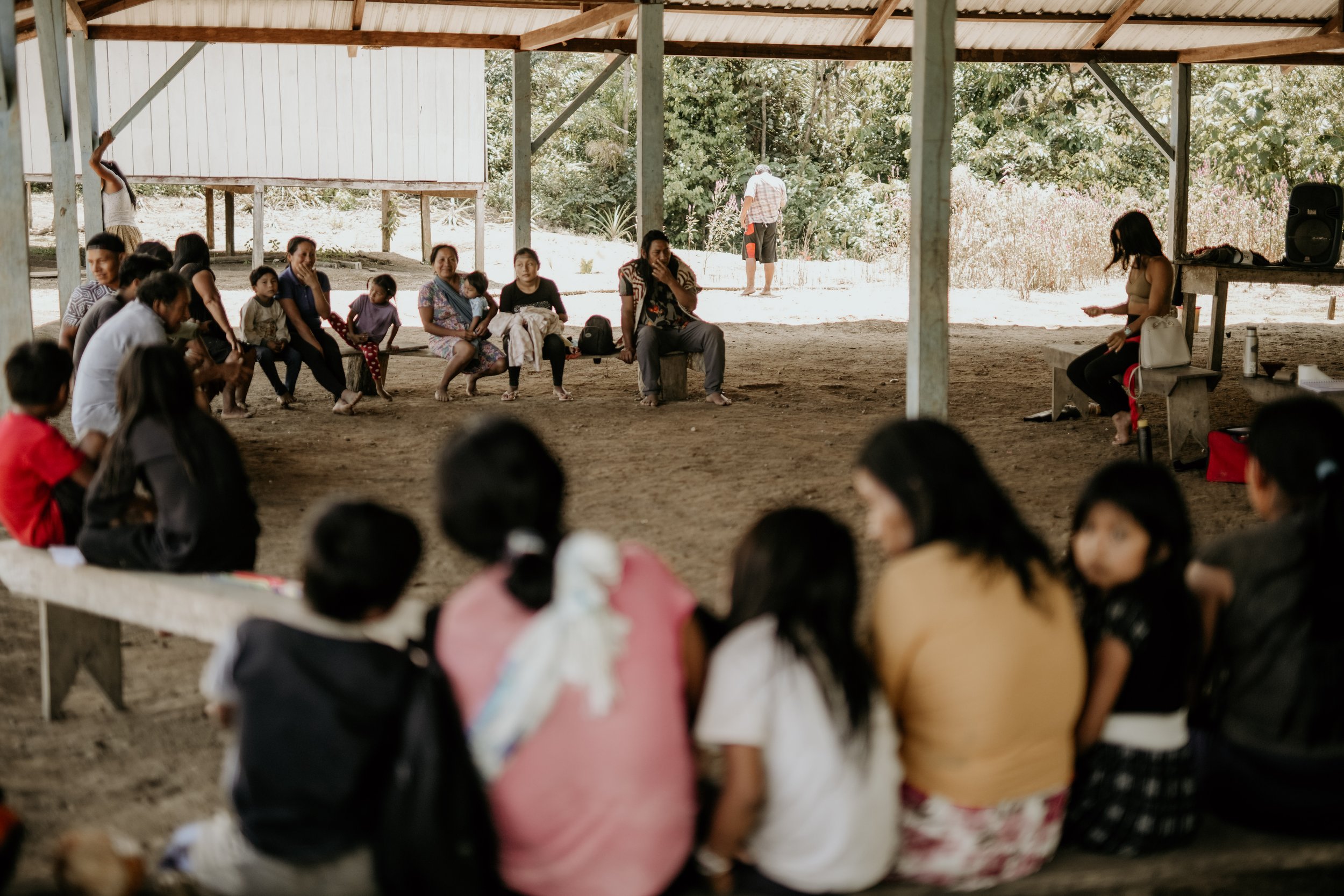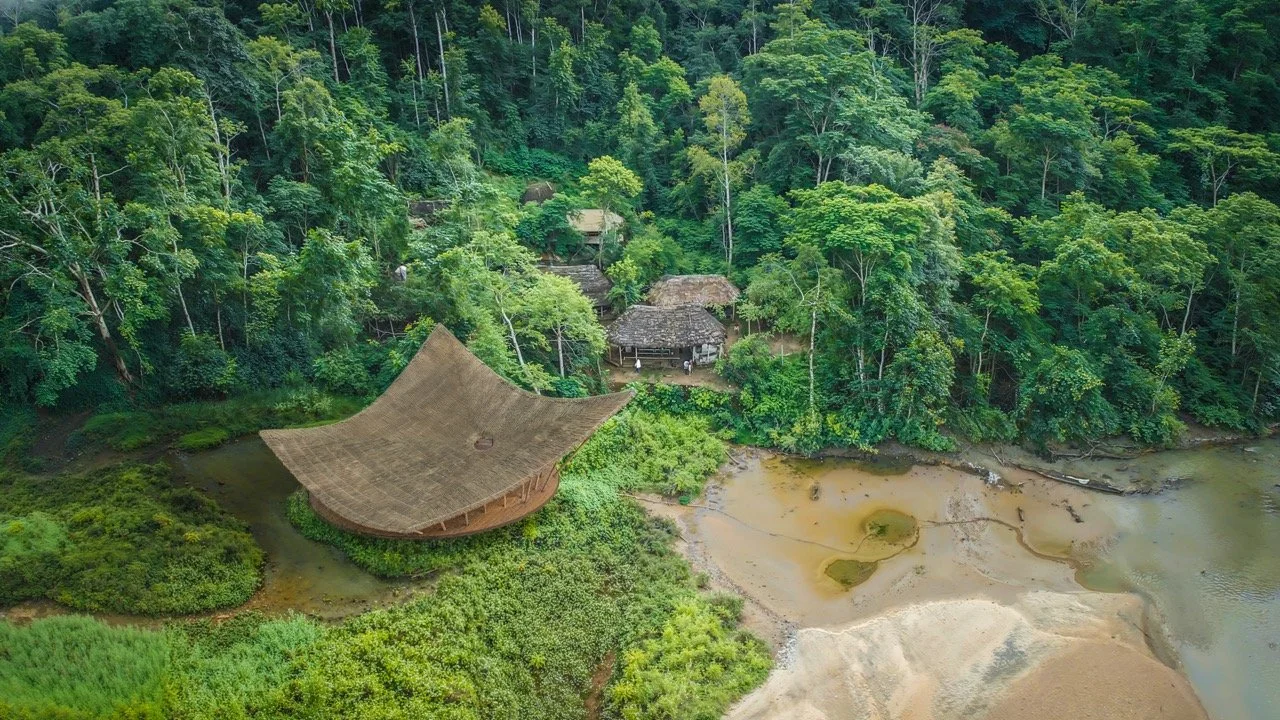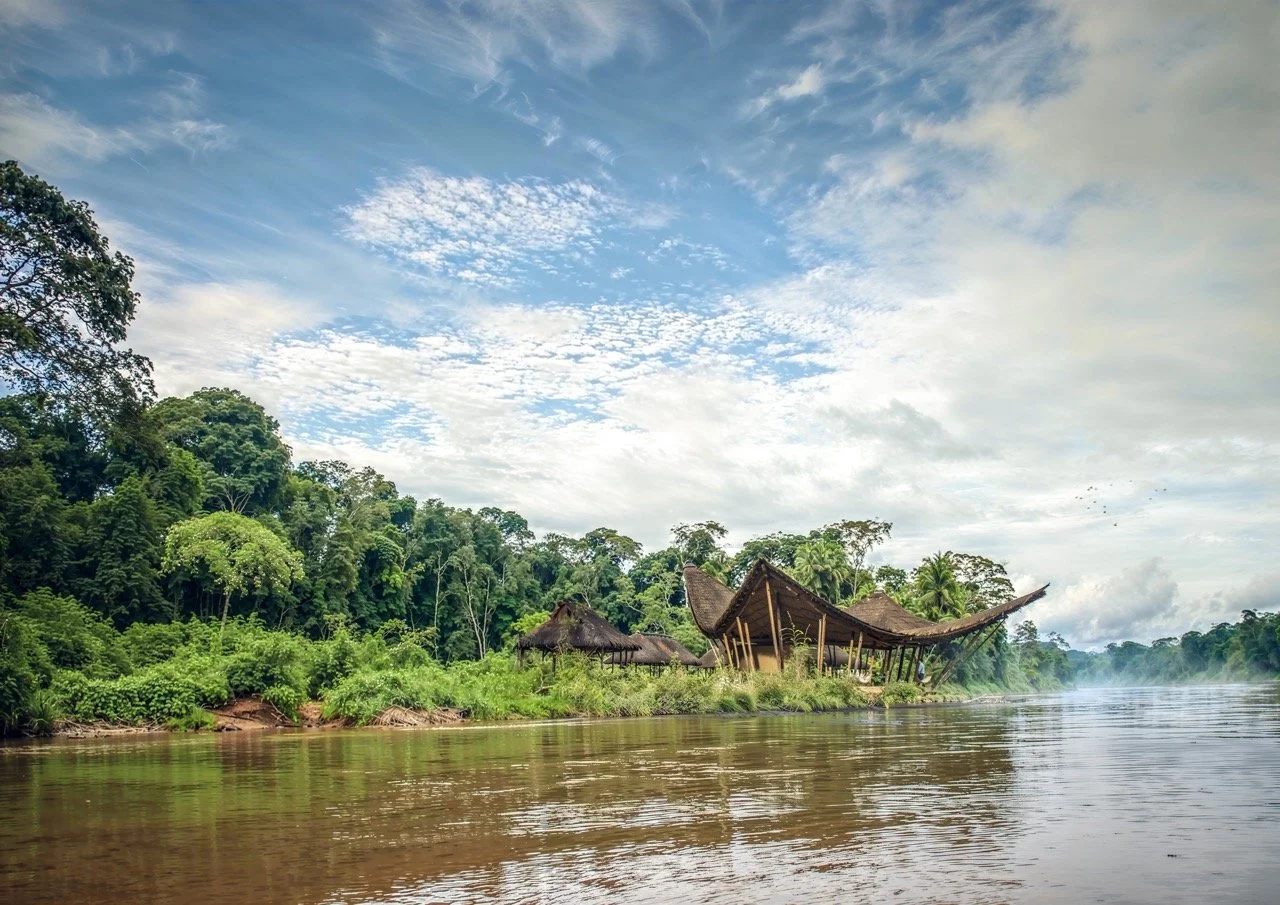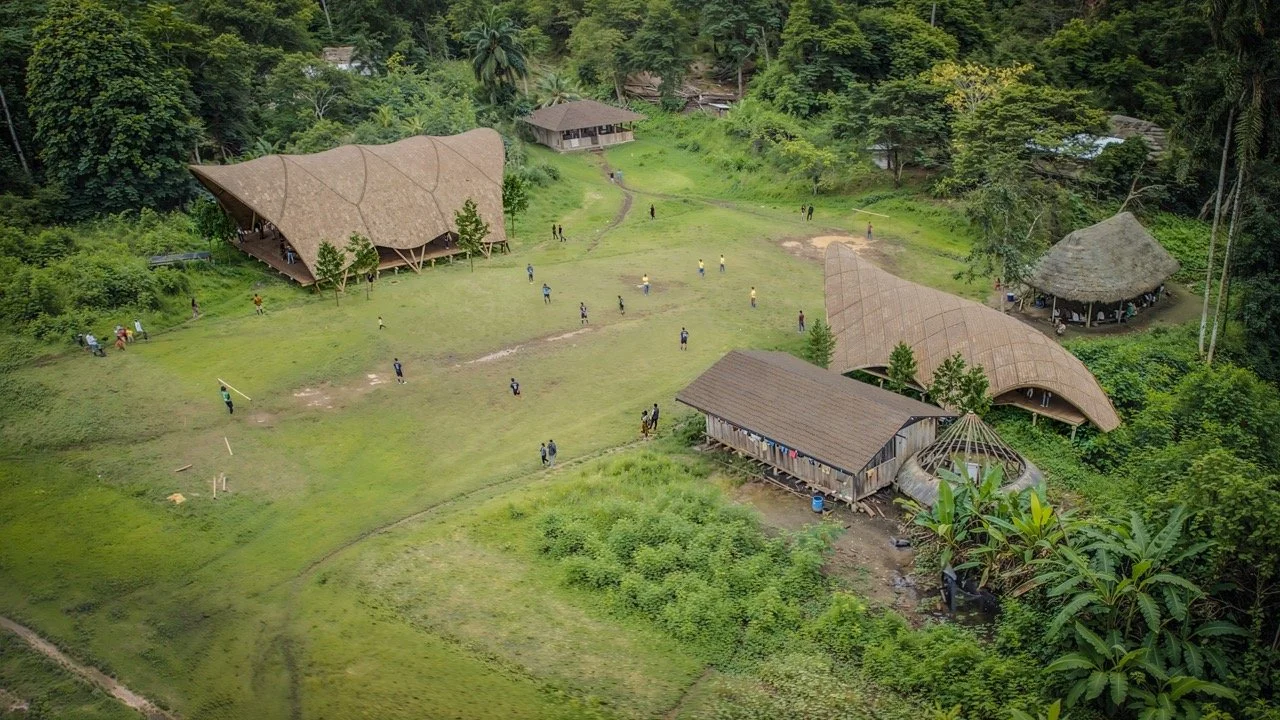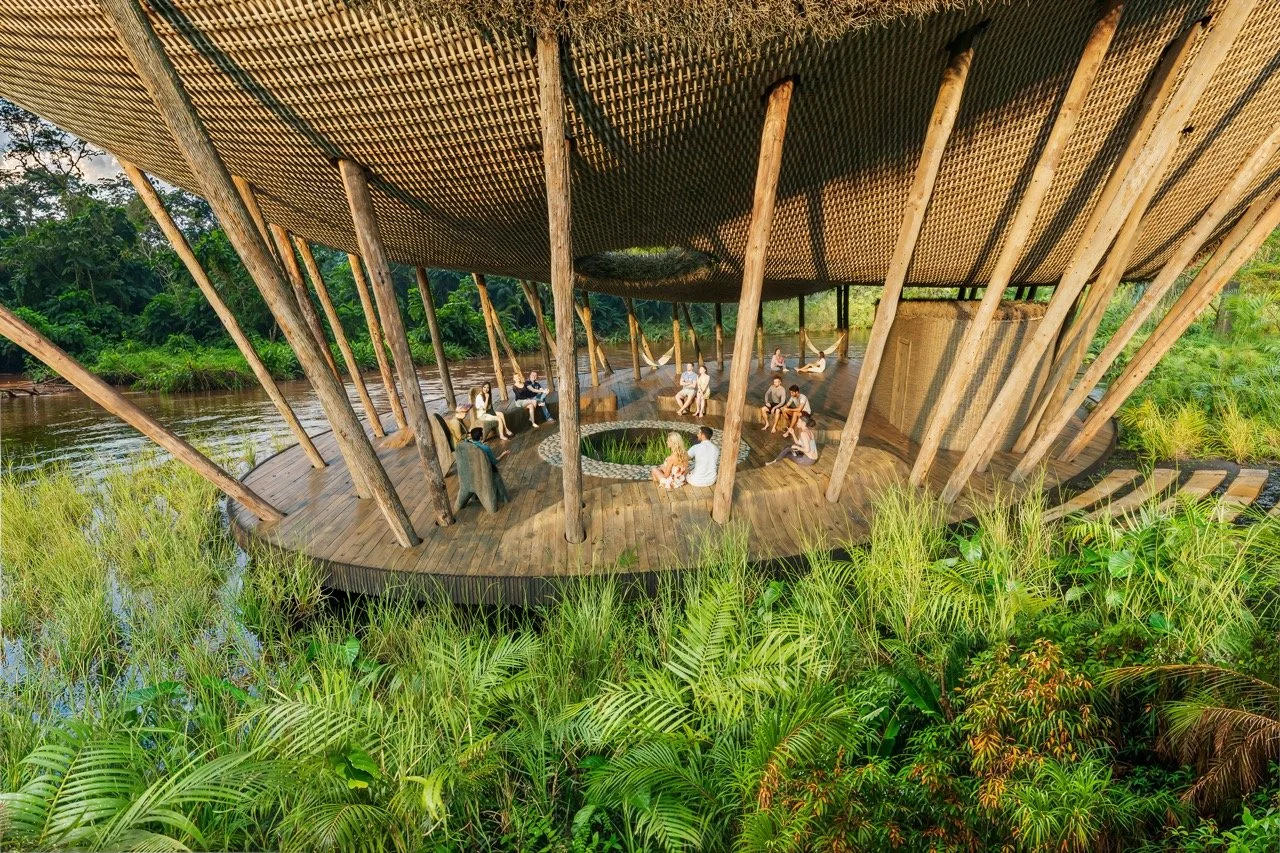
Our Projects
The Four Pillars of Regeneration
Rooted in Indigenous wisdom and guided by Sapara leadership, each Naku Foundation project grows from one of four living pillars.
Together, they form a regenerative system — where sovereignty, culture, and ecology are woven as one.
In Sapara worldview, everything is alive forest, water, wind, soil.
The word Samai means the vital breath that sustains all life. It is spirit, energy, and movement — the invisible force that connects the material and the spiritual.
Western models often separate economy (the management of the home) from ecology (the wisdom of the home). But for the Sapara, these are inseparable. The true home is the forest, and caring for Samai is caring for life itself.
This is the heart of Naku’s work: a transition from the economy of extraction to the ecology of relationship from ownership to reciprocity, from consumption to regeneration.
The forest is not a resource. It is kin.
The care of the forest is the economy.
The Following are the 4 pillars
Territorial Management Protecting the Land Is Protecting Life
Focus: Protection of ancestral territory and biodiversity.
Vision: Strengthen territorial governance and defend the spiritual, ecological, and cultural integrity of the Sapara lands.
For thousands of years, the Sapara people have safeguarded over 914,289 acres of rainforest in southeastern Ecuador, guided by dreams, ceremony, and deep ecological intelligence.
This pillar ensures that the forest remains under Indigenous stewardship through community governance, youth leadership, and sacred site protection.
By combining ancestral knowledge with modern tools such as drone mapping and biodiversity studies, Naku supports the Sapara Nation in creating a living map of their territory — one that defends not only land, but identity and spirit.
Key Projects
Territorial Mapping & Protection Program: community and digital mapping of sacred sites and biodiversity corridors.
Community Rangers Initiative: Sapara youth trained in drone mapping and conservation technology.
Sacred Sites Documentation: safeguarding ceremonial and medicinal places.
Agreements for Collective Protection: partnerships with NGOs and institutions for territorial recognition.
Regenerative Economy From Economy to Ecology
Focus: Indigenous-led economic systems rooted in reciprocity.
Vision: Restore abundance through forest-based livelihoods that honor tradition, autonomy, and ecological regeneration.
Rooted in the Sapara principle of Samai, the vital breath of life, this pillar redefines economy as relationship.
Rather than extraction, it focuses on community-led enterprises that regenerate ecosystems while ensuring self-sufficiency and dignity.
Through agroforestry, medicinal plant cultivation, and regenerative tourism, Naku supports projects that allow Sapara families to thrive while protecting the forest transforming every act of harvest into an act of reciprocity.
Key Projects:
Sapara Cacao Program: agroforestry integrating cacao, medicinal plants, and native trees (Aminiaka model).
Medicinal Plant & Oil Production: community-based production of ancestral formulas.
Eco-Tourism & Cultural Exchange: regenerative travel rooted in ceremony and education.
Artisan & Forest Product Cooperatives: empowering Sapara women and youth in sustainable crafts.
Sapara Education Learning from the Forest
Focus: Revitalization of language, identity, and ancestral knowledge.
Vision: Create an intercultural education system that transmits Sapara wisdom and strengthens connection to the territory.
For the Sapara, education is a process of remembering, learning from dreams, from the river’s rhythm, from the stories of the elders.
This pillar ensures that ancestral teachings remain central to the education of the next generation, integrating Sapara cosmology and ecological understanding with contemporary learning tools.
Through the Shimaka Curriculum, Naku supports the creation of intercultural education models where language, art, and land-based learning become the foundation for community-led schools.
Key Projects:
Shimaka Curriculum Project: building an educational framework grounded in ancestral cosmology.
Language Revitalization Program: teaching the Sapara language to children and youth.
Intercultural School Pilot: community-run education integrating traditional and modern learning.
Exchange Programs: connecting Sapara youth with Indigenous and global initiatives.
Sapara Vitality Health from the Root
Focus: Well-being, culture, and spiritual renewal.
Vision: Protect and transmit Sapara cosmology, ceremonies, and healing traditions for future generations.
Vitality is the balance between body, spirit, and territory.
This pillar uplifts ancestral medicine, ceremony, and spiritual practice as the foundation of community health, ensuring that healing remains a collective act of regeneration.
Through gatherings, healing centers, and elder support, Naku strengthens the transmission of knowledge from healers and midwives to the next generation, preserving practices that keep both people and forest in balance.
Key Projects:
Samai Healing Program: spaces of cultural and energetic regeneration.
Cultural Revitalization Gatherings: intercommunity ceremonies and traditional music.
Elder & Healer Support Fund: sustaining Sapara healers, midwives, and knowledge keepers.
Photography & Oral History Archive: preserving voices, dreams, and images of elders.
A Vision Rooted in the Forest
The Future
Architecture of Naku
The Naku Wisdom Hub is a dream taking shape — a living space where the four pillars of Naku will one day meet: Territory Management, Regenerative Economy, Education, and Vitality.
It has not yet been built. We are gathering the resources, the partners, and the collective will to bring it to life.
This vision emerged from ceremony and dialogue with Sapara elders, who dreamed of a place where the forest itself could teach — where the voices of the river, the wind, and the trees would guide each gathering.
The architectural design is being led by our lead architect, Roberta Vasnic of VOID Studios (UK), in close collaboration with the Sapara Nation and the Naku Foundation team.
Together, they are shaping a structure that listens, one that breathes with the land rather than imposing upon it.
Constructed with local materials and guided by Indigenous leadership, the Wisdom Hub will serve as a center for learning, healing, and regeneration, a space for ceremony, storytelling, and intercultural exchange.
“This architecture is not yet standing, but it already lives in our collective vision — a seed waiting for the right hands, hearts, and resources to grow.”

A Living System
These four pillars form Naku’s regenerative system — an Indigenous-led model for ecological restoration, cultural revival, and climate resilience.
For the forest. For the people. For the world.
[Partner With Us] | [Support the Work] | [Learn More]
Download
the Naku Foundation Pitch Deck
Our detailed pitch deck outlines the Naku Foundation’s structure, current programs, and long-term vision for Indigenous-led regeneration in the Amazon.
It includes project budgets, partners, and opportunities for collaboration across all four pillars.



